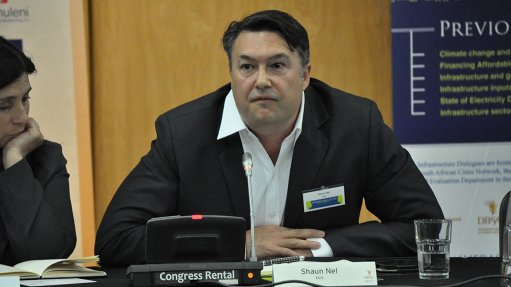
SHAUN NELSouth Africa agreed to reduce its carbon emissions by 37% in 2015 and by 42% by 2025, most of which needs to happen at city level
Strong consensus emerged at a recent Infrastructure Dialogues gathering, which took place in Midrand, in August, that a combination of behavioural change and partnerships between the private sector, civil society and government is needed in order for city-level regenerative initiatives to have any chance of success.
The concept of ‘regenerative cities’ entails cities becoming environmentally resilient and economically stable, as well as improving the living conditions for residents and reducing the cities’ carbon footprint.
The future beyond sustainability and the efficiency of cities continue to be of interest and concern, particularly the challenges and opportunities regarding urban policy, planning, design, engineering, development and management.
The audience at the gathering highlighted their concerns, such as that city dwellers need more direction and awareness on how to and why they should adopt greener behaviour to reduce individual carbon emissions at residential level.
At the event, Energy Intensive User Group (EIUG) project director and adviser Shaun Nel explained that a possible solution was to change the structure of the South African economy and the country’s energy mix.
“The opportunity for regenerative cities exists where people and communities have not previously had access to electricity and where Eskom’s retired and retiring power stations can be replaced with new renewable-energy solutions,” he says.
In 2009, South Africa signed the Copenhagen Accord to reduce its carbon emissions by 37% in 2015 and by 42% by 2025, most of which needs to happen at city level.
To this end, the Department of Environ-mental Affairs is undertaking a national study to investigate available mitigation options across the country to reduce emissions. The department is under-going a carbon budgeting process to find ways of forcing organisations to reduce their carbon emissions.
“One such solution being considered is carbon tax. The EUIG does not consider this to be a solution, as the cost will be passed on to the consumer and emissions will not be reduced. What can work, however, is an emissions cap, which will limit the amount of emissions allowed for an organisation,” he says.
Internationally, the key urban imperatives for regenerative urban development are well defined – energy sufficiency and renewable-energy systems, water security, zero waste, food security, sustainable transport, green business, biodiversity and green behaviour.
The audience at the Infrastructure Dialogues indicated that focusing on developing emerging cities as regenerative cities to militate against the high cost of future interventions and the integration of the many plans the country had to transition into a green economy were possible solutions.